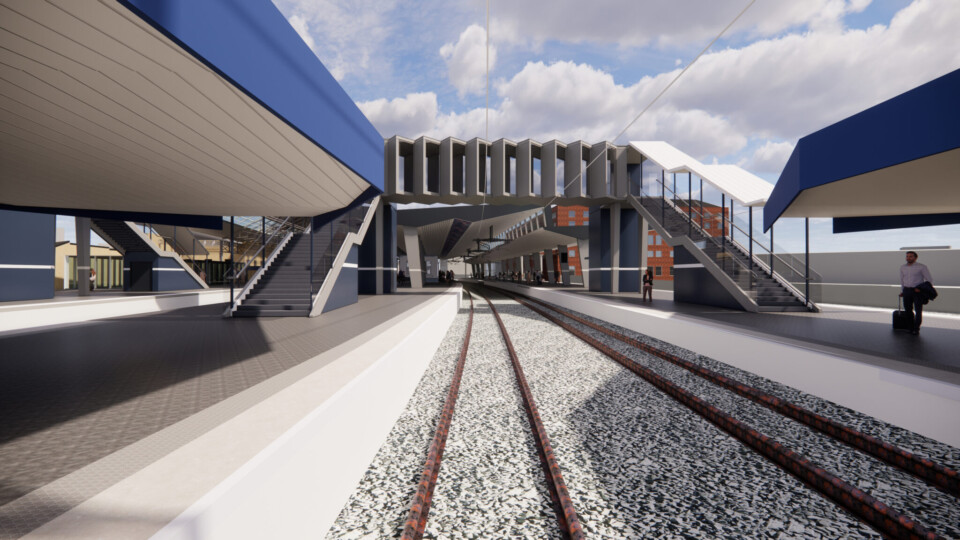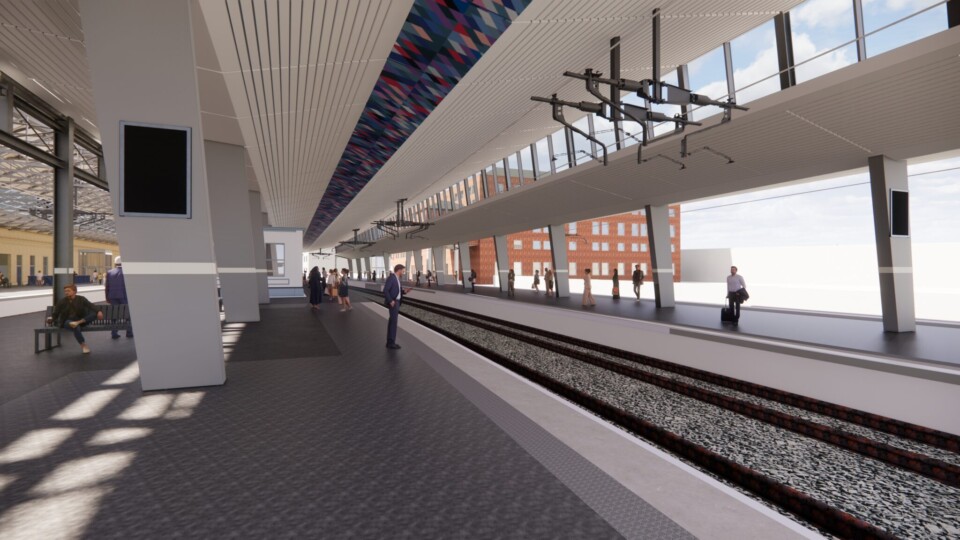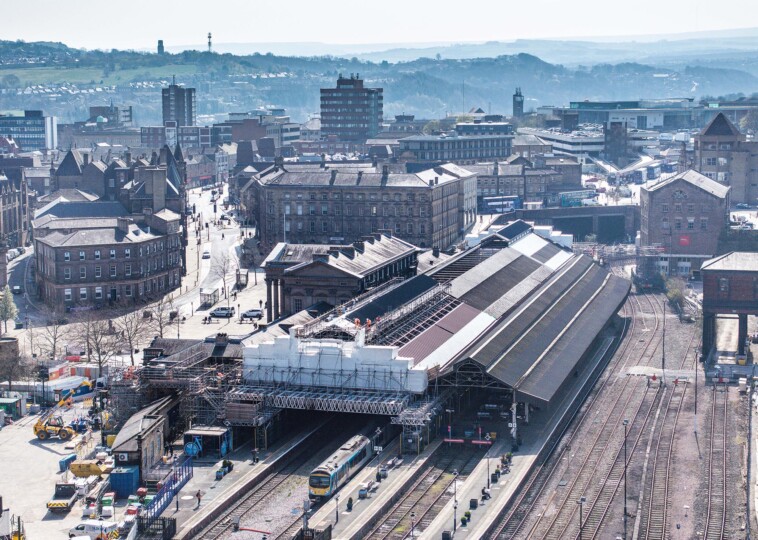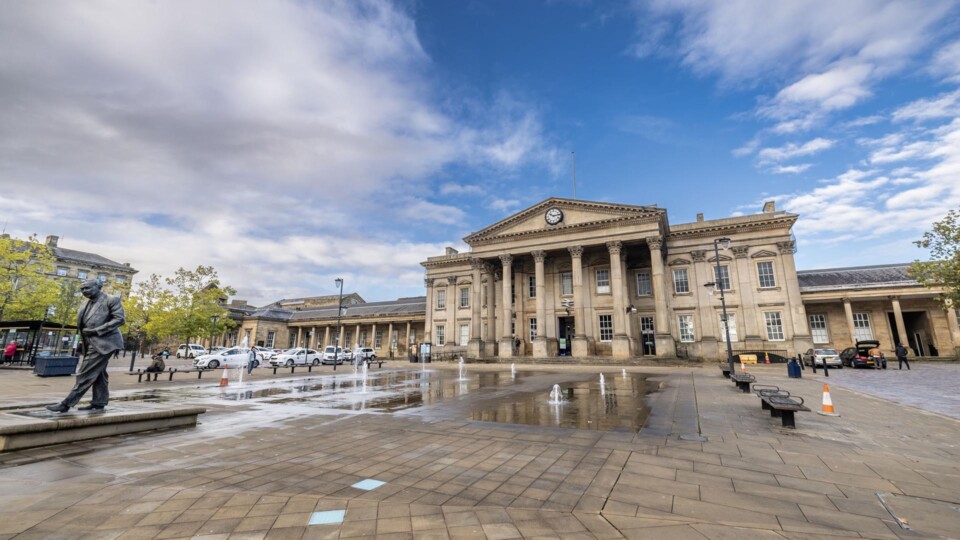Huddersfield station: its heritage and its future
On 6th October 1846, a public bank holiday was declared as the Earl of Fitzwilliam laid Huddersfield station’s foundation stone. Last Saturday (30 August), nearly 180 years on from that momentous day, the station closed for 30 days of intense work, as its grandest transformation in a generation is undertaken as part of the Transpennine Route Upgrade.
The Huddersfield station story begins in 1839, when the Manchester and Leeds railway finally breached a formidable geographical barrier: the Pennines. After years of local campaigners rallying around the need for the line to branch out to Huddersfield, an 1845 Act of Parliament put the wheels in motion before prolific Yorkshire architect, James Pigott Pritchett’s vision came to life in an official part-opening of the station in 1847.

By 1850, the iconic station façade was complete after a local jeweller supplied the clock that still keeps time over the historic St. George’s Square. The same frontage survives to this day, serving as an impressive backdrop for large gatherings in the square from as far back as 1853 – when election protests erupted – and still welcomes passengers to the Grade I listed building in 2025.
By 1878 the station needed upgrading to meet the ever-changing demands of growing capacity. An island platform was built to accommodate the additional tracks required and by 1886, the bustling station activity sat beneath an engineering marvel: its Euston-style roof.
Huddersfield station’s ‘Euston roof’ takes its name after an identical structure at the original London Euston. After a tragic collapse during construction in 1885, the roof was reconstructed a year later using wrought iron to create a more expansive structure with a width of 77 feet, seen as a remarkable engineering achievement at the time which remains a symbol of industrial innovation, even today.
TRU are ensuring that the efforts of those Victorian engineers are preserved through the sympathetic restoration of the station roof – work is well underway and the canopy’s historic features still retain prominence in the new, more durable structure.

The station also boasts a fine Grade II listed tearoom. Built during the 1886 station upgrade, passengers have spent decades in the warmth of the cosy confines over a brew. The timber-boarded tearoom has been carefully dismantled in 8,000 individual pieces which are being stored off-site before reinstatement on the newly remodelled platform in all its former glory.
Journeys in and out of the station’s eastern end cross 47 spans of quarry-faced arches, 53ft above the town on Huddersfield Viaduct. Constructed in 1847, it was widened as part of the station upgrades in the 1880s as capacity demands needed to be met. Now, similar demands mean TRU work on the viaduct will see the reconfiguration and addition of tracks in tandem with the changes inside the station. Strengthening upgrades to the structure are also needed for the installation of overhead line equipment which will power electric trains.

The remodelled platforms are another focus of TRU work throughout the 30-day closure. Repositioned and lengthened, they will allow longer trains with more seats to stop at the station, whilst track renewals will make for smoother, more reliable journeys.
Balancing the need to preserve such important pillars of heritage at the station whilst bringing it up to modern standards is essential for TRU. By 2027, Huddersfield station will be transformed and serve as a vital hub for a new era of rail travel across the Pennines, but stones laid in the 1840s will remain, and ideas drawn up in the 1880s will still be etched into the station’s identity.

